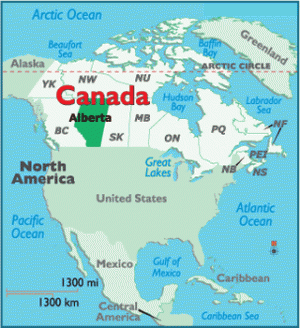At a time when most other provinces face declining school enrolment, Alberta stands out.
“A Transformation in Progress,” Alberta Education’s 2011 “snapshot” of teacher and student demographics, projected Alberta’s student population will increase by 150,000 over the next 14 years. The report estimated the province will need an an additional 9,000 full-time equivalent teachers to meet this demand.
Keeping pace with Alberta’s growth, however, won’t be easy. School boards face a chronic shortage of male teachers; a shortage of teachers in areas such as second languages and career and technology studies; and many teachers’ preference for working in urban centres, even though they’re badly needed in rural areas.
Widespread perceptions of a teacher surplus, says Alberta Education spokesperson Amanda Krumins, aren’t entirely accurate. Although teachers who want to work in Calgary or Edmonton may struggle to find employment immediately after graduating, jobs are much easier to come by in rural school districts, particularly in northern Alberta.
Big city graduates’ preference for teaching in their hometowns has made recruitment in rural areas difficult, Krumins says, prompting the province to offer a variety of incentives. Among them is the Northern Student Teacher Bursary, which offers education students with select specialties the chance to receive a $16,000 bursary in exchange for teaching in the north for three years upon graduating.
Ninety per cent of participants from the program’s first year are now teaching in the region, says Krumins, an area with a traditionally high turnover rate among teachers which the bursary aims to redress.
“So we help them with their education costs, and in turn they kind of pay it back to the community by giving the students a stable teacher,” she says.
Although recruitment is easier in a big city such as Calgary, the Calgary Board of Education’s Karen Demassi says the board still faces some challenges. One of them is finding second language teachers, particularly for the Spanish bilingual program, which has doubled to more than 2,500 students over the past four years.
Demassi travelled to Spain as part of a CBE delegation earlier this year, selecting about 22 Spanish teachers who will work here on a temporary basis. They’re valuable both for offering students a native speaker of the language, she says, and for bringing a “cultural component” to the program with their background.
Another recruitment priority, Demassi says, is adding more teachers in career and technology studies. These teachers can be hard to find since they’re generally required to have both a teaching certificate and hold the Red Seal standard of excellence in the trades. The CBE’s also alert, says Demassi, to the lack of men in teaching, a persistent problem that has seen the proportion of male students within Alberta’s education programs decline to around 20 per cent.
But while the CBE’s needs are greater in some areas than others, Demassi stresses its door is always open to good applicants, regardless of what they teach.
“We are looking for the most highly qualified, multi-skilled, highly energized, full of life, full of innovation, wanting to be with kids, kind of teachers.”

